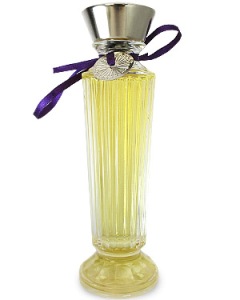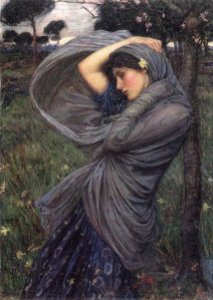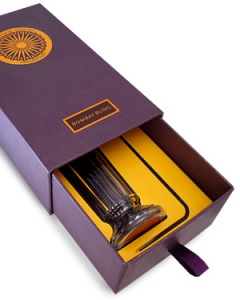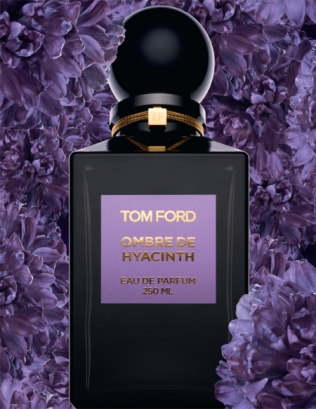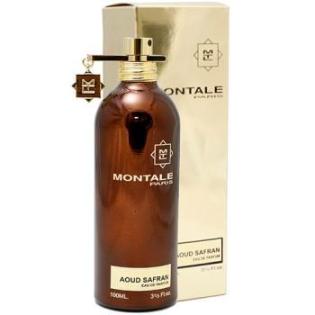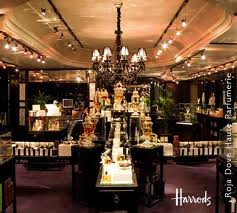The princess stared out into the garden from her cold marble bench. The sun was setting, turning the sky into an artist’s canvas of pinks, yellows, and fiery oranges before the oncoming wave of violet and blue. In the horizon, the silver birch trees trembled in the night wind. Delicate and frail, their thin bodies added a touch of somber beauty to the tableau of colours filling the sky behind them.
The Northern light rendered everything crisp and silvered, casting the tall rose bushes surrounding the princess into stark relief. Every pink petal — and every red one, too — seemed brighter, more concentrated and filled with the force of life. Their intensity was a sharp contrast to the princess’ pallor. As she welcomed the coming night, her large, dark eyes were filled with longing and wistfulness, as she remembered her lost love. How many times had they sat in this very spot, watching the sky turned violet and blue?
As the sun bid its final adieu, the princess took out a violin and played in the violet, blue light. A single tear streamed down her milky, almond skin to drop on the irises at her feet. The tall rose bushes around her quivered, as if trembling with the force of her longing; the peppered trees swayed over the water, sending out her call to distant shores; and her sandalwood satin dress glowed amber in the night like a beacon.
Princesses of old, legends tinged with beauty and loss, the coming of violet night, and wistful remembrances of times past…. that’s what I feel when I wear Mohur by the French perfume house, Neela Vermeire Creations, Paris (“NVS“). So many times in the past — often in reference to a Guerlain classic — I’ve heard talk of wistfulness in a scent, but I’ve never truly felt it until now. Mohur is a stunningly haunting perfume whose very quietness lends strength to scenes of longing and melancholy. Filled with restrained elegance and classic notes of violets, irises and roses, it never takes me to India but, rather, to the silvery light of northern Scandinavia. It is a fragrance for Isolde in Tristan and Isolde, for Guinevere, for the countless maidens of legend whose beauty was tinged with loss.
Mohur is technically not supposed to evoke any of that. It is a tribute to 500 years of India’s history from Moghul era of the Taj Mahal to the end of the British Raj period in 1918. It is particularly inspired by India’s most powerful Empress. As the Neela Vermeire website explains:
Known as Mehrunissa, the most powerful Empress of the Mughal dynasty, Noor Jahan was the favorite wife of Emperor Jehangir. She was the true power behind the throne while her husband lived, so much so that after his death her male relatives had her sequestered (in comfort!) for the rest of her life. In her confinement, she devoted herself to the art of perfumery as it had been passed down from her mother.
Mohur is a rose-based fragrance, a combination of opulent moghul rose perfumes and a distinguished spicy leather bouquet that can only be imagined during a high tea after a polo match. To capture this moment, Mohur has been created as a refined rose-oudh alliance that pays tribute to Noor Jahan’s power and talent.
As for the name of the perfume, Neela Vermeire Creations explains that “the word ‘mohur’ derives from Sanskrit and refers to the most valuable gold coin in India’s history, the last of which were minted in 1918.”
Mohur is the second in a trio of scents, all of which were made in collaboration with the legendary perfumer, Bertrand Duchaufour, and all of which were released in 2011 to great acclaim. Mohur’s stunning sibling, the award-nominated Trayee, is perhaps one of my favorite perfumes that I’ve smelled in years and years. And Bombay Bling is pure joy in a bottle — so incandescent, bubbling, bouncy, happy and ebullient that people repeatedly call it their “happy” scent or the perfume equivalent of an anti-depressant.
I actually hadn’t expected to like Mohur as much as I did. It’s considered to be the quiet sister to the other two, each of which were said to have more immediate impact — and I’m generally not one for the quiet, subdued, and restrained. Trayee is the mysterious, seductive older sister; Bombay Bling, the happy, innocent, playful, joyous baby sister. Mohur is the quiet, reserved, elegant one. To my surprise, however, it was immediate love upon first sniff. I never thought it could equal Trayee in my estimation, but it does. Oh, but it does!
Mohur has an enormously long list of notes. Unlike many perfumes nowadays with their six or, maybe, ten ingredients, Mohur has twenty-three! The fragrance has:
Top: Cardamom absolute, Coriander seed oil, Ambrette seed, Carrot, Black Pepper, Elemi oil;
Middle: Turkish rose oil, Moroccan Rose Absolute, Rose Accords 11%, Jasmine accord, Orris, Aubepin Flower [hawthorn], Almond milk notes, Violet Flower, Leather vitessence:
Bottom: Sandalwood, Amber, White Woods, Patchouli, Oudh Palao from Laos, Benzoin Siam [resin], Vanilla, Tonka bean.
In the opening seconds, Mohur begins with single note of great purity: roses. The most absolute, concentrated note and it quivers in the air, like the very first stroke of a bow on a violin. It’s as tens of thousands of rose petals — pink and ruby-red — have been distilled into a single drop. The purity and strength of that note is beautiful, but it’s never cloying or sickly sweet.
Immediately thereafter, other notes trip and dance on its footsteps: woody notes that seem soft and like the white woods of the description; spices; amber; almonds; and a base of creamy sandalwood. There is the merest hint of cardamom and, perhaps, some saffron too. The latter is never red, rich or reminiscent of Indian desserts. Rather, it just adds some underlying sweetness and depth to the fragrance.
There is also something which truly surprised me. My notes read, “Oh my God, I actually do smell carrots!” Here, the carrot note is exactly like that in a really creamy, sweet, spiced carrot soup, the sort you’d mix with butternut squash or pumpkin to create a velvety sweetness and richness. And, somehow, it works magnificently with the roses — probably due to that amazingly creamy sandalwood which is such a significant note in all of Neela Vermeire’s creations.
 As time passes, the violet and almond notes become more distinctive, contrasting with the black pepper and the subtle hint of creamy vanilla. The violet notes…. words can’t describe its beauty or its melancholy. Yet, two hours in, the violets and almonds recede a little to make greater way for the peppery elemi woods which — in combination with the actual black pepper — turn the rose into something spicy and fiery. At the same time, the patchouli works in the background to make the rose very jammy and plummy as well. One can’t smell any actual patchouli, but its effect on the rose is distinctive. Parts of my arm smell like pure, sweet pink roses, while other parts smell like fruited, purple, jammy roses.
As time passes, the violet and almond notes become more distinctive, contrasting with the black pepper and the subtle hint of creamy vanilla. The violet notes…. words can’t describe its beauty or its melancholy. Yet, two hours in, the violets and almonds recede a little to make greater way for the peppery elemi woods which — in combination with the actual black pepper — turn the rose into something spicy and fiery. At the same time, the patchouli works in the background to make the rose very jammy and plummy as well. One can’t smell any actual patchouli, but its effect on the rose is distinctive. Parts of my arm smell like pure, sweet pink roses, while other parts smell like fruited, purple, jammy roses.
Roses may be the motor, but violets (and their accompanying purple sibling, irises) are the petrol which truly drive Mohur forward. They are the exquisite center of the fragrance, adding a classique and very European backbone to the spicy rose. It is these purple notes which add that longing and wistfulness to the scent, emotions which are so hard to explain in the context of perfume. When people talk about Guerlain‘s L’Heure Bleue‘s blue hour or the inherent sadness of certain perfumes, I’ve always been left a little at a loss. I’ve never found L’Heure Bleue to evoke melancholy, or any other perfume for that matter. Until now.
Mohur definitely seems to be a call back to the most classique of French perfumery and, for a thirty minutes, I struggled with what it was. Finally, it hit me: Guerlain‘s 1906 masterpiece, Après L’Ondée. Like Mohur, it too is a fragrance whose notes are filled with violets, irises, almonds, sandalwood, amber, vanilla, oriental resins and, yes, some roses, too. Bois de Jasmin has a lovely, emotional review of Après L’Ondée’s “radiant and exquisitely graceful composition… [with its] suggestion of a brooding darkness hiding in its opulent layers,” and its “bittersweet beauty” with its “wispy and ethereal” velvety iris heart.
I feel as though all those words are the perfect description for Mohur. That said, there are substantial differences in the two scents. Mohur is predominantly a rose fragrance which is significantly woodier, as well as spicier. And, unlike many Guerlain perfumes, the powder note is subtle on my skin. But, despite those differences, there is a definite connection between the two fragrances in my mind. If Après L’Ondèe had an affair with a very tall, dark, woodsy, peppery Orientalist, their love child would definitely be Mohur. And she would be as blue as the blue hour of L’Heure Bleue, mourning a lost love like those fragile beauties who so stole my heart in Pre-Raphaelite art. In truth, Mohur’s representative woman probably would be one of Gabriel Dante Rossetti’s feminine, graceful beauties with their long necks, large eyes, quivering lips and haunted gaze.
As Mohur develops, it shifts away from the blue wistfulness of the violets and the dark, brooding heart of elemi and black pepper. Now, it turns softer, creamier, sweeter. The sandalwood is out in full force: creamy, heady, and as lush as custard. At the same time, the amber and benzoin resin turn things soft and hazy; the milky almonds return; and the vanilla becomes much more noticeable. There is also the merest suggestion of oud. It’s sheer, light, far from pungent, and never (thankfully) medicinal or antiseptic. For some on Fragrantica, however, the oud was a significant part of the perfume’s later hours; and a few smelled leather. I did not.
It’s an odd experience but, on both occasions, when I tested Mohur, different parts of my skin would reflect different scents — all at the same time. It’s not only the constantly shifting nature of the rose note — sometimes pure, sometimes peppery, sometimes spicy, sometimes jammy or fruited — but the perfume as a whole. It’s so incredibly well-blended that I suspect it will throw off different prisms at different times, like a light-reflecting crystal. All of Neela Vermeire’s creations are like that; they reflect different facets each time you wear them.
Despite Mohur’s prismatic nature, the final hours were — for the most part — the same during both tests. There was endless creamy sandalwood, vanilla, tonka bean, and dollops of jammy rose that would pop up, then flit away. Sometimes, there seemed to be more vanilla; at other times, there would be more almond. Sometimes, it was slightly more amber than sandalwood; at other times, the reverse.
All in all, Mohur lasted a little over 9.5 hours on me. For my perfume-consuming skin, that’s very good, though I have to note that it was much less than Trayee which lasted around 13 hours. (And, almost 14.5 on a recent day). But, then again, Mohur is a much softer fragrance. As noted on Fragrantica, its sillage is good-to-moderate for the first hour. If you apply two good sprays, the scent noticeable from a few feet away; if you put on a few dabs, the projection will obviously be significantly less. At no time, however, is Mohur ever bullying or bludgeoning in its presence; it’s not going to keel over your office mate. After that first hour, Mohur becomes much softer and hovers about five inches over your skin. It becomes fully close to the skin after about 4.5 hours, but it remains like a lovely silken caress for much longer.
I think Mohur is an extremely versatile fragrance. Its moderate sillage also makes it very suitable for the office, especially if you don’t apply it heavily. However, I must be frank, I don’t think the majority of men would be able to wear Mohur. Despite its woody underpinnings and the occasionally biting black pepper, the sheer quantities of roses — with one accord being at 11% concentration — makes this a very feminine fragrance.
It also has such a retro, classique, restrained elegance that I wonder if very young women might think it too mature a scent for them. Or, perhaps, one just has to have experienced a lot of life and heartache to respond to Mohur’s wistful, longing calls. To be frank, it actually bowled me over. And I found that to be an enormous surprise. Traditionally, I am not a huge fan of rose scents, and I certainly am not one who usually falls for restrained florals. Yet, Mohur stole my heart from the very first sniff. I find its blue-violet melancholy to be absolutely exquisite — and exquisitely haunting.
I fear that, like many middle sisters, Mohur will get lost in the much more exuberant or forceful company of its sisters. Those who expect the immediate POW that they get from Bombay Bling or the WOW glam of the FiFi-award nominated Trayee will undoubtedly be disappointed upon the first sniff of Mohur. I think Mohur is like one of those quietly elegant women whom you never notice amidst all the exuberant, fun, laughing girls, or the smoldering seductresses. But, if you gaze upon her face long enough, you suddenly wonder: how did I ever missed her beauty?
When you apply Mohur for the very first time, I think you need to close your eyes, imagine Beethoven’s Moonlight Sonata, and see that princess on her marble bench surrounded by roses amidst the incoming wave of violet night, as she thinks wistfully of the past and of her one true love. I think, maybe, just maybe, you’ll be haunted by her quiet beauty, too.
[UPDATE: Mohur will be released in a pure parfum concentration in Fall 2013. It will be called Mohur Extrait de Parfum, and it’s magnificent. You can read my early review for it here.]
DETAILS:
Cost & Availability: In the U.S., Mohur is an eau de parfum that is available exclusively at Luckyscent where it costs $250 for a 55 ml bottle. Samples are also offered at $7 for a 0.7 ml vial. (And the site ships world-wide.) Samples are also available from The Perfumed Court where they start at $7.99 for a 1/2 ml vial. A much better offer than both of those comes from Neela Vermeire Creations itself which offers Mohur as part of two different sets: A Taste of India set and the Discovery Set. Both sets are exclusive to the Neela Vermeire website and both include the award-nominated Trayee and the fan-favorite, Bombay Bling, Neela Vermeire’s fruity-floral perfume.The Taste of India set costs: €21 (or about $27) for three, much larger, 2 ml vials; the Discovery Set is $117 or €85/90 (depending on your location) for three, large 10 ml decants. Shipping is included in the price. In Europe, Mohur costs €200 for the 55 ml bottle and is available at Jovoy Paris, along with the Swiss Osswald Parfumerie. You can find a few additional retailers from the Netherlands to Moscow which carry Trayee on the store’s Points of Sale page.




